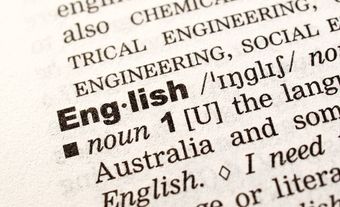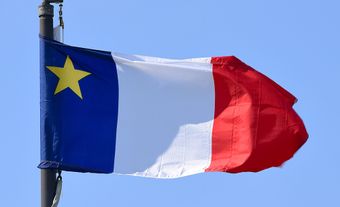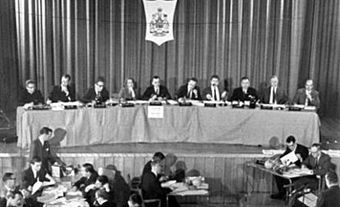Although French and English are Canada’s only two official languages, the country’s linguistic diversity is very rich. According to the 2016 census, an increased number of Canadians are reporting a mother tongue or language spoken at home other than English or French compared to in previous years. This is in addition to a large diversity of Indigenous languages.
Languages in Canada
From the strictly legal standpoint of the federal government, there are three major classes of languages in Canada: official or "Charter" languages — French and English— which are recognized under the federal Official Languages Act of 1969; ancestral languages of Indigenous peoples, traditionally spoken by First Nations, Métis and Inuit which are not legally protected at the federal level and; those that Statistics Canada terms “immigrant languages,” which do not enjoy official status in Canada but are nonetheless widely spoken.
Mother Tongue and First Official Language Spoken (FOLS)
The Canadian census by Statistics Canada distinguishes between two definitions of language speakers: mother tongue and first official language spoken (FOLS).
The mother tongue definition refers to the first language learned and still understood by an individual. The purpose of counting people based on first official language spoken is to help distinguish, in broad terms, between French- and English-speaking Canadians. The FOLS definition is derived from three federal census questions: knowledge of Canada’s official languages, mother tongue, and home language.
Both categories exist in addition to Canadians’ general knowledge of either official language.
English-Speakers in Canada
In the 2016 census, 29.97 million Canadians — 86.2 percent of all Canadians — reported themselves as knowing English. Canadians whose first official language spoken was English represented roughly 75 percent of the total population, or just over 26 million people. Among these, 20,193,340 Canadians, or 58.1 percent of the total population, reported English as being at least one of their mother tongues. (See also Canadian English; Anglophone.)
English is the primary FOLS learnt by immigrants with 82.5 percent doing so versus only 10.8 percent for French and 6.8 percent learning neither.
French-Speakers in Canada
While French and English are considered official languages by the federal government, French is only recognized as an official language at the provincial level by Quebec and New Brunswick.
In the 2016 census, around 10.36 million Canadians — 28.8 percent of all Canadians — reported themselves as knowing French. Canadians whose first official language spoken was French represented 22.8 percent of the total population, or just over 7.9 million people. About 7.45 million Canadians, or 21.4 percent of the population, reported French as being at least one of their mother tongues. (See also French Language in Canada; Francophone.)
In Quebec, most immigrants (62.5 percent) learnt French as their FOLS versus 33.1 percent who learnt English first.
Indigenous Languages in Canada
There are around 70 distinct Indigenous languages in Canada. These languages fall into 12 separate language families and are traditionally spoken by First Nations, Métis people and the Inuit.
In 2016, Statistics Canada reported that for about 40 Indigenous languages in Canada, there are only about 500 speakers or less. This number does not distinguish between fluent and learning speakers, which means that a more accurate estimation of the number of fluent language speakers of any particular Indigenous language might be less. Statistics Canada revealed that 260,550 Indigenous people reported the ability to speak an Indigenous language; this represents a 3.1 percent increase from 2006. Algonquian languages had the largest speaking population (175,825), followed by Cree (96,575) and Ojibwe (28,130).
Immigrant Languages in Canada
According to Statistics Canada, immigrant languages are languages “whose presence is initially due to immigration after English and French colonization.”
In 2016, more than 7.12 million people — 11.2 percent of Canadians — reported having an immigrant language as their single mother tongue. Some of the most spoken immigrant single mother tongues include Mandarin (592,040 speakers), Cantonese (565,270 speakers), Punjabi (501,680 speakers), Spanish (458,850 speakers), Arabic (419,890 speakers), Tagalog (431,380 speakers), German (384,035 speakers), and Italian (375,635 speakers).
The most spoken immigrant language in each province and territory are: Tagalog in the Yukon, the Northwest Territories, Nunavut, Alberta, Saskatchewan and Manitoba; Punjabi in British Columbia; Mandarin in Ontario and Prince Edward Island and; Arabic in Quebec, Newfoundland and Labrador, Nova Scotia and New Brunswick.

 Share on Facebook
Share on Facebook Share on X
Share on X Share by Email
Share by Email Share on Google Classroom
Share on Google Classroom




